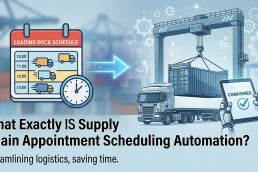TMS Transition Advice

In the world of freight technology, upgrading or transitioning to a new Transportation Management System (TMS) is a significant undertaking. Understandably, companies often feel that such a major project requires their full focus and resources, leading them to postpone decisions on implementing other technologies, including solutions like scheduling automation. They might think, “We’ll wait until the new TMS is in place before we add anything else.”
However, the perspective presented challenges to this conventional wisdom. The source argues that planning a TMS transition shortly (say, within 6 to 12 months) should not be a reason to “put optimization and automation on hold till that time comes”. Modern automation solutions are designed with flexibility in mind, specifically to accommodate such transitions.
The beauty of these flexible solutions is that they make it “simple to get started” even while the old TMS is still in use or the transition is underway. For instance, a two-week process is mentioned as sufficient to get scheduling automation “stood up”. This initial implementation requires “no large lift, no big integration for your team”. This means companies can begin leveraging the benefits of automation relatively quickly and without significant disruption to their ongoing operations or the transition project itself.
The key advantage highlighted is the seamless nature of the transition for the automation solution itself. As the company continues to schedule and the automation learns and becomes smarter about their processes, that “exact product can then be plugged into your new TMS when you’re ready to go”. This happens “without skipping a beat,” implying a smooth handover from the old system environment to the new one.
This approach offers a significant benefit: companies can “actually drive automation ROI and improvement” not just after the new TMS is live, but actively “as you work through that transition period to your new system”. Instead of a period of stagnation for efficiency improvements, the transition time becomes an opportunity to realize benefits. Furthermore, once the new TMS is in place, the company can “continue to build off of that as you go,” extending the automation’s capabilities and benefits.
In essence, the message is clear: don’t let an impending TMS change be a barrier to automation. Flexible, easily integrated solutions allow you to start realizing ROI and operational improvements in scheduling immediately and carry those benefits forward into your new system environment


